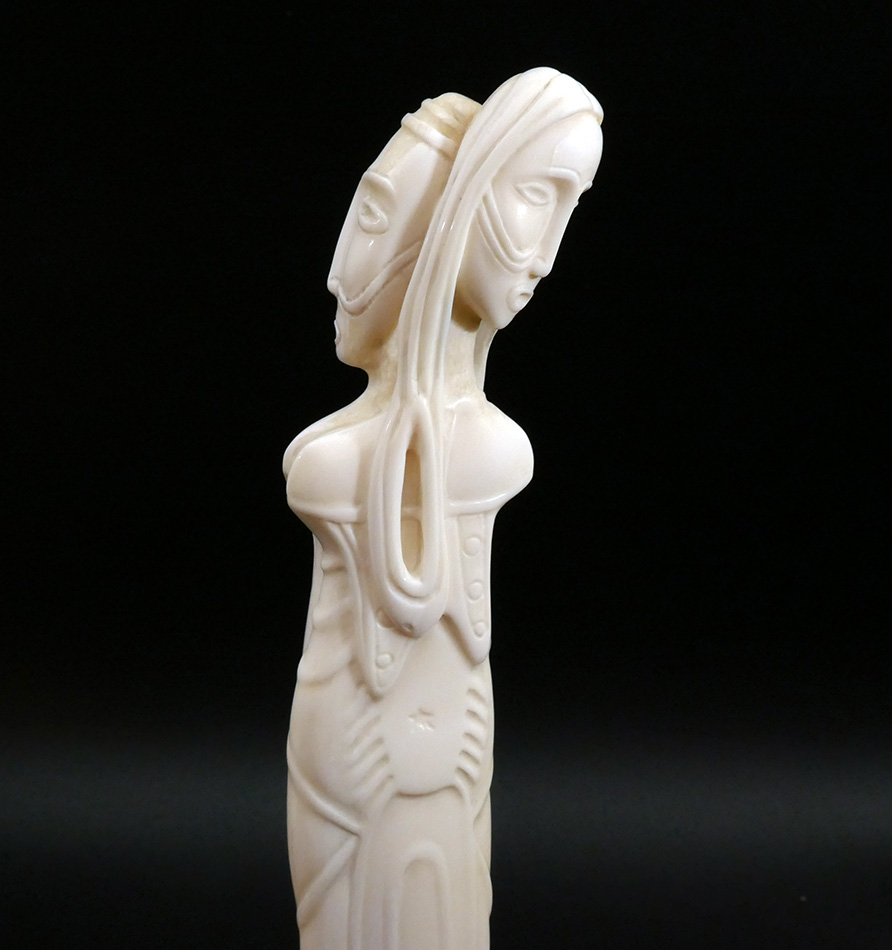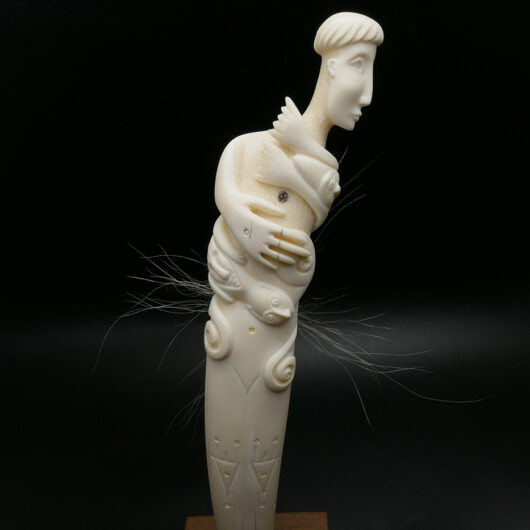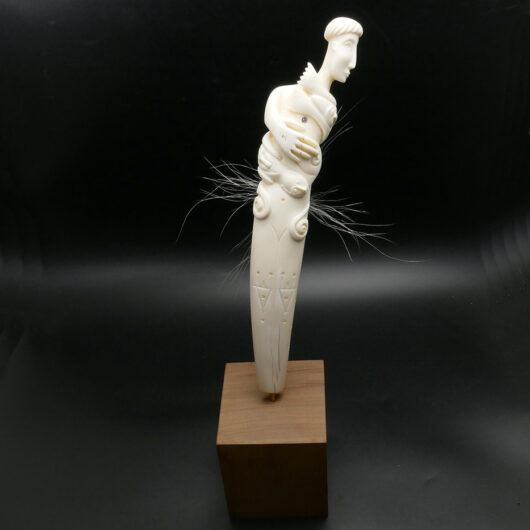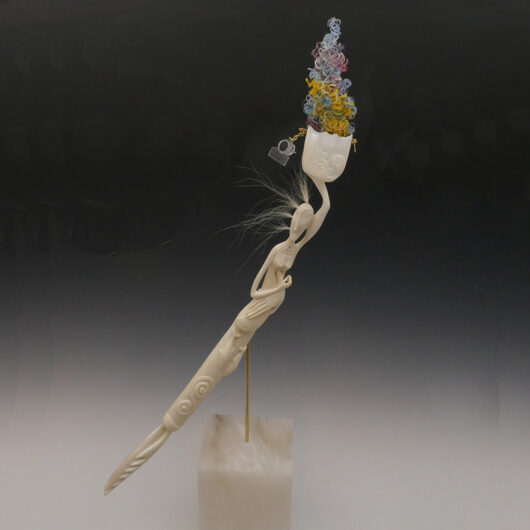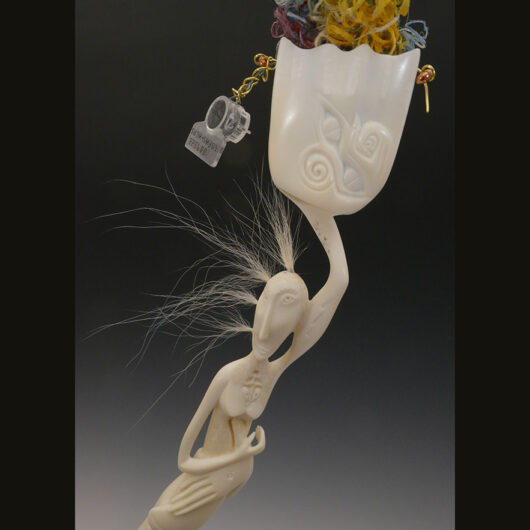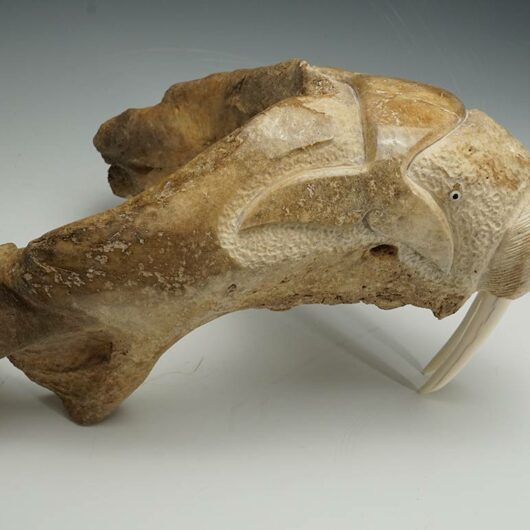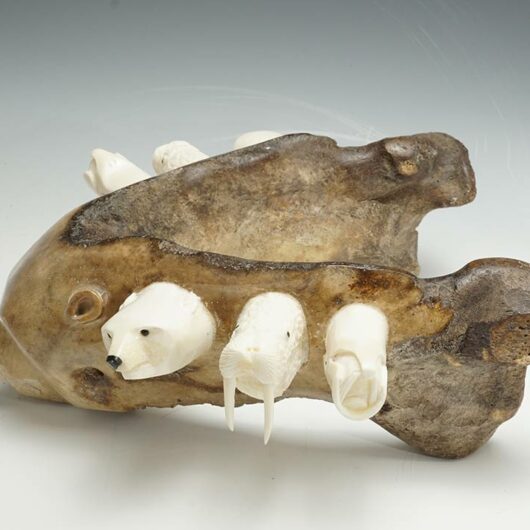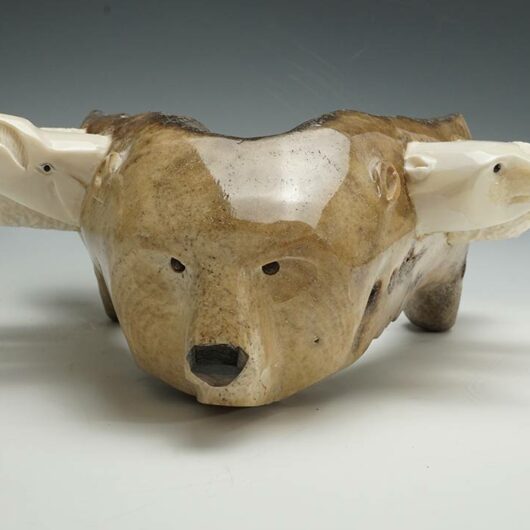Susie Silook The Dolls Yup’ik Sculpture
$5,000.00
Susie Silook The Dolls Yup’ik Sculpture
Susie Silook, one of the most original artists to come out of Alaska, created an evocative sculpture with two human figures emerging from a single walrus tusk. The sculpture, carved in 1991, is titled “The Dolls”, a reference to ivory carvings that were made up to 2,000 years ago, and have been excavated in the vicinity of the Bering Strait.
The Metropolitan Museum describes these dolls, in part, as follows:
“Armless and legless, with faces reduced to essential elements, the figures are part of a larger group of works that have been called dolls by some, ceremonial or shamanistic objects by others. Most frequently they represent females. In Siberia during the nineteenth century, armless female figures were house guardians and spirits of illness; it has been suggested that in ancient times they may have had a similar role. The ivory torsos are known primarily from the region of the St. Lawrence and Punuk islands in the Bering Sea between Alaska and Siberia.” *
Silook’s depiction of dolls shares the characteristic armless and legless torso in reference to the ancient dolls referred to above. In contrast, her dolls are anything but featureless; they are adorned with numerous carved and etched features, for example:
- Ribs are visible on one of the figures, often indicative of human anatomy in Inuit symbology
- The dolls faces have distinctive eyes, nose, lips, other facial adornment, and hair, including circular braids on one of the heads.
- A star is carved into the chest of one of the dolls.
- Circles are present in various places on the dolls, some of them with a dot in the center (nucleated), and some plain; the nucleated circles have three branches emanating from the circle. Nucleated circles have been used by Inuit cultures globally for centuries.
- In a clear deviation from the ancient dolls, the smaller figure appears to have legs.
Carved from walrus tusk with a whalebone base.
Sculpture is 12 1/4 inches high x 1 5/8 inches wide x 3/4 inches deep. Including the base, it is 13 1/4 inches high.
* Retrieved from the internet May 16, 2023: http://www.metmuseum.org/art/collection/search/312882
Out of stock
Artist: Susie SilookSusie Silook The Dolls Yup’ik Sculpture
Susie Silook, one of the most original artists to come out of Alaska, created an evocative sculpture with two beings. The sculpture, carved in 1991, is titled “The Dolls”, a reference to ivory carvings that were made up to 2,000 years ago, and have been excavated in the vicinity of the Bering Strait.
The Metropolitan Museum describes these dolls, in part, as follows:
“Armless and legless, with faces reduced to essential elements, the figures are part of a larger group of works that have been called dolls by some, ceremonial or shamanistic objects by others. Most frequently they represent females. In Siberia during the nineteenth century, armless female figures were house guardians and spirits of illness; it has been suggested that in ancient times they may have had a similar role. The ivory torsos are known primarily from the region of the St. Lawrence and Punuk islands in the Bering Sea between Alaska and Siberia.” *
Silook’s depiction of dolls shares the characteristic armless and legless torso in reference to the ancient dolls referred to above. In contrast, her dolls are anything but featureless; they are adorned with numerous carved and etched features, for example:
- Ribs are visible on one of the figures, often indicative of human anatomy in Inuit symbology
- The dolls faces have distinctive eyes, nose, lips, other facial adornment, and hair, including circular braids on one of the heads.
- A star is carved into the chest of one of the dolls.
- Circles are present in various places on the dolls, some of them with a dot in the center (nucleated), and some plain; the nucleated circles have three branches emanating from the circle. Nucleated circles have been used by Inuit cultures globally for centuries.
- In a clear deviation from the ancient dolls, the smaller figure appears to have legs.
Carved from walrus tusk with a whalebone base.
Sculpture is 12 1/4 inches high x 1 5/8 inches wide x 3/4 inches deep. Including the base, it is 13 1/4 inches high.
* Retrieved from the internet May 16, 2023: http://www.metmuseum.org/art/collection/search/312882
| Weight | 5 lbs |
|---|---|
| Dimensions | 54 × 16 × 14 in |
| Color | 1 |

